How to use dynamic array in VBA
The provided data contains sales information for three products: Product A, Product B, and Product C. The sales figures are recorded in dollars ($) and are continuously updated as new rows are added to the column. By utilizing VBA code with dynamic arrays, we can calculate the average sales and total sales for any number of rows present in the column. This allows for flexibility in handling varying amounts of sales data and enables us to obtain accurate and up-to-date insights into the overall performance of the products.
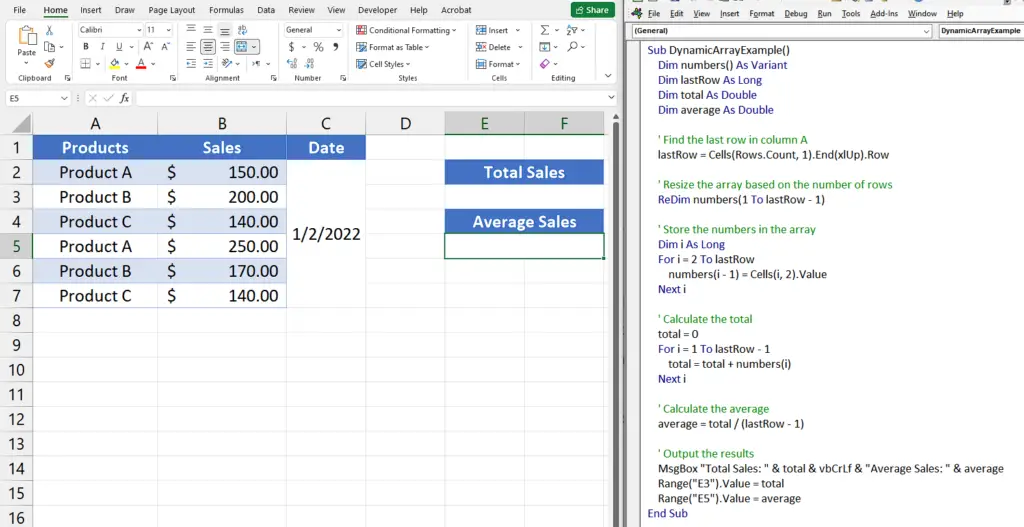
In VBA (Visual Basic for Applications), a dynamic array is an array whose size can be changed or resized during runtime. Unlike a static array, which has a fixed size specified during declaration, a dynamic array allows for flexibility in handling data that may vary in size.
Step 1 – Insert a module
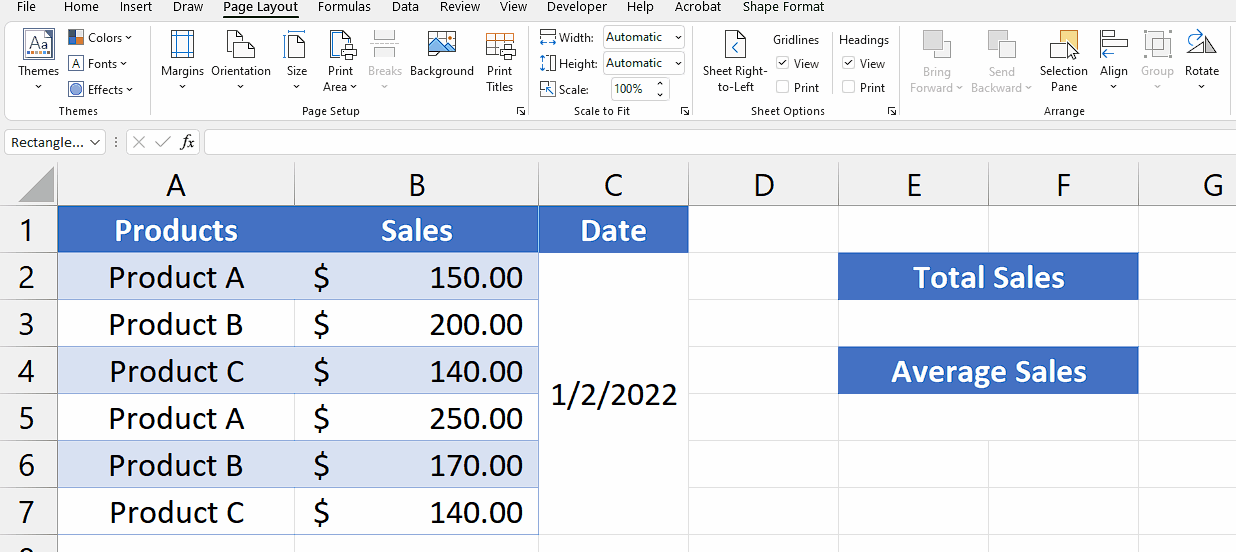
– For adding a module, navigate to the Developer tab.
– After that, click on the first option named Visual Basic.
– You’ll see a new window on your screen and you can also open this window by using the shortcut key (Alt+F11) as well.
– Then, click on the Insert tab in this window and click on the Module option.
– Now, a new module would open.
Step 2 – Write the code
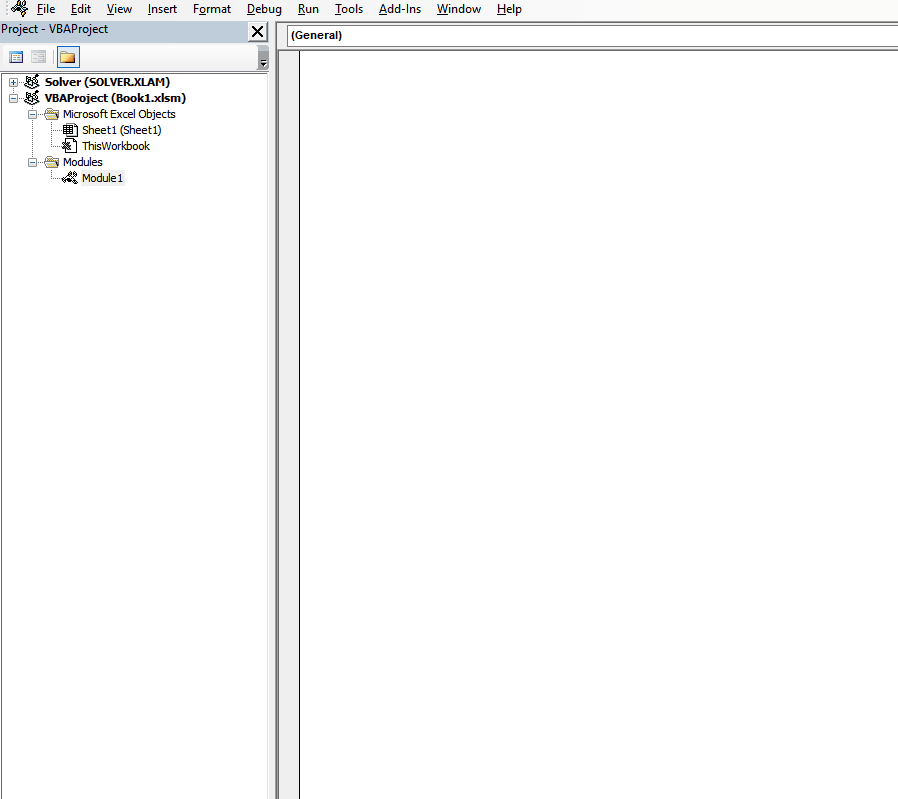
– Write the code which contains the Dynamic array of the code area of the module.
– For example, we are writing the following code,
Sub DynamicArrayExample()
Dim numbers() As Variant
Dim lastRow As Long
Dim total As Double
Dim average As Double
‘ Find the last row in column A
lastRow = Cells(Rows.Count, 1).End(xlUp).Row
‘ Resize the array based on the number of rows
ReDim numbers(1 To lastRow – 1)
‘ Store the numbers in the array
Dim i As Long
For i = 2 To lastRow
numbers(i – 1) = Cells(i, 2).Value
Next i
‘ Calculate the total
total = 0
For i = 1 To lastRow – 1
total = total + numbers(i)
Next i
‘ Calculate the average
average = total / (lastRow – 1)
‘ Output the results
MsgBox “Total Sales: ” & total & vbCrLf & “Average Sales: ” & average
Range(“E3”).Value = total
Range(“E5”).Value = average
End Sub
– Then, close the VBA Editor by pressing “Alt+Q”.
Step 3 – Add the button
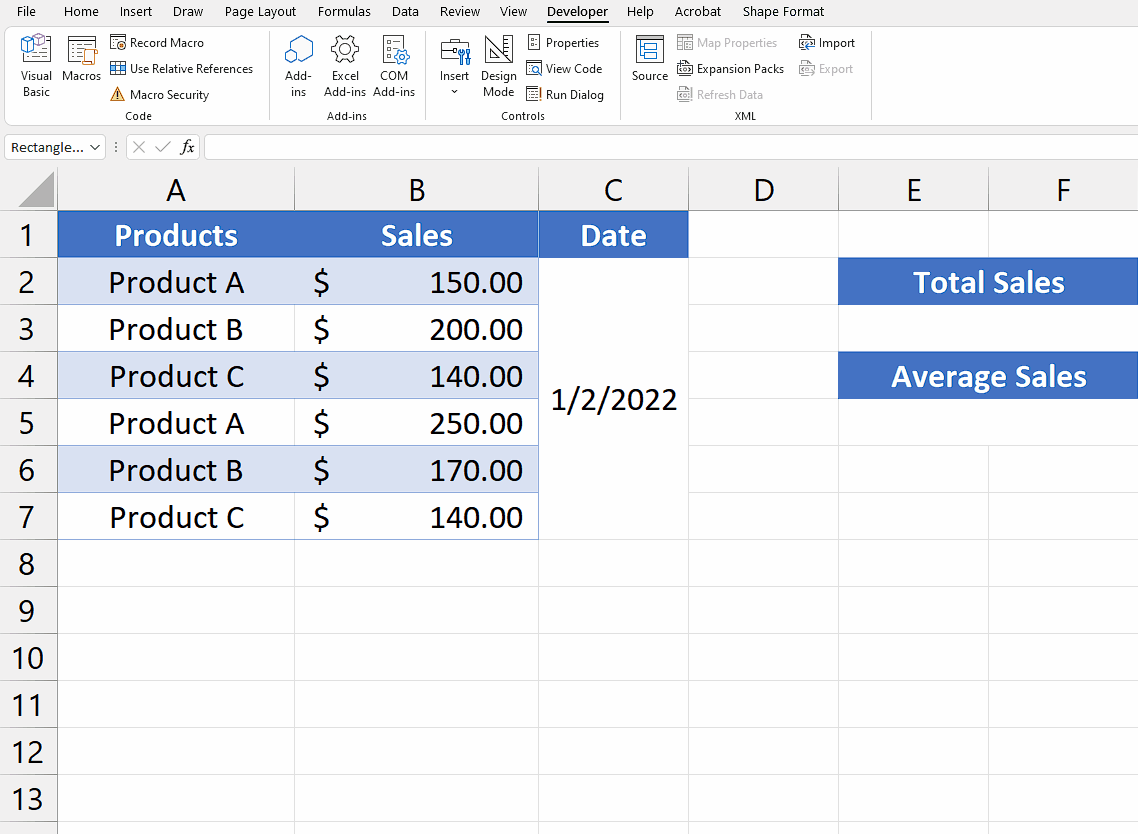
– For inserting a shape that will act as a button, navigate to the “Insert” tab.
– Click on the “Shapes” option under the “Illustrations” group.
– After that, select any shape you like.
-To insert a shape at a specific location, hold down the left-click button on your mouse and drag the cursor.
– Then, you can change “Shape Fill”, “Shape Effects” etc. in the “Shape Format” Tab.
– Now, you can add text such as “RUN CODE” in the newly inserted shape.
Step 4 – Assign Macro
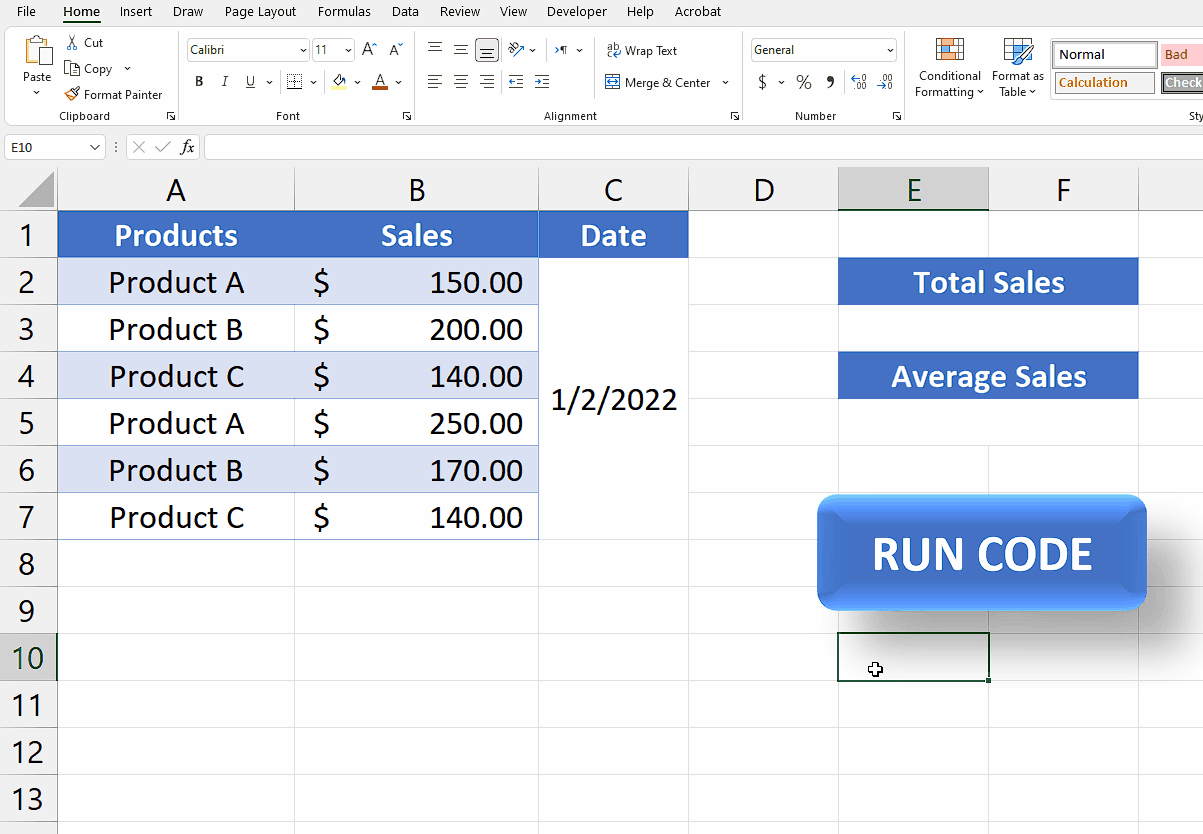
– For assigning the macro, right-click on the shape and click on the “Assign Macro” option.
– Click on the name of your macro such as “DynamicArrayExample”.
– Then, press the “OK” button.
Step 5 – Run the code
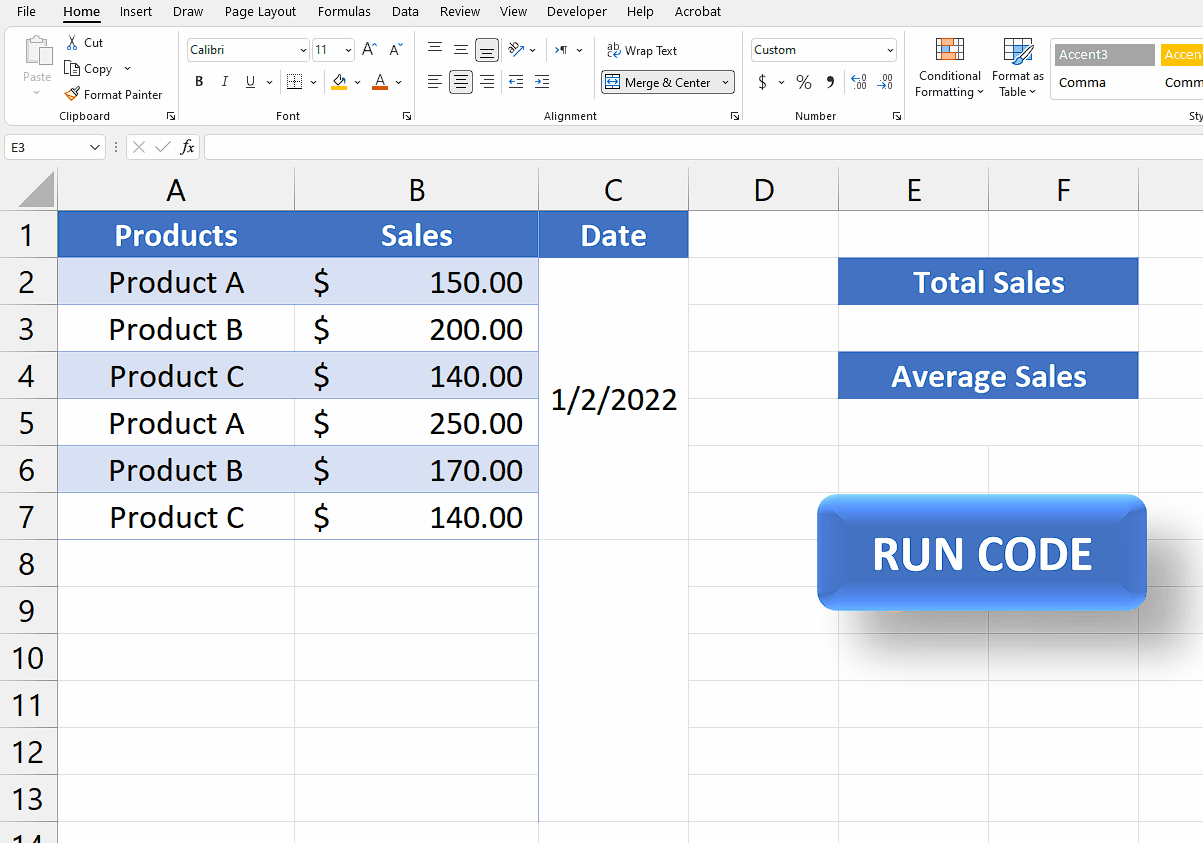
– Click on the button to run the code.
– The use of a dynamic array allows the code to run smoothly and accurately calculate the total sales and average sales, regardless of the number of cells in the “Sales” column.
Step 6 – Modify the Dataset
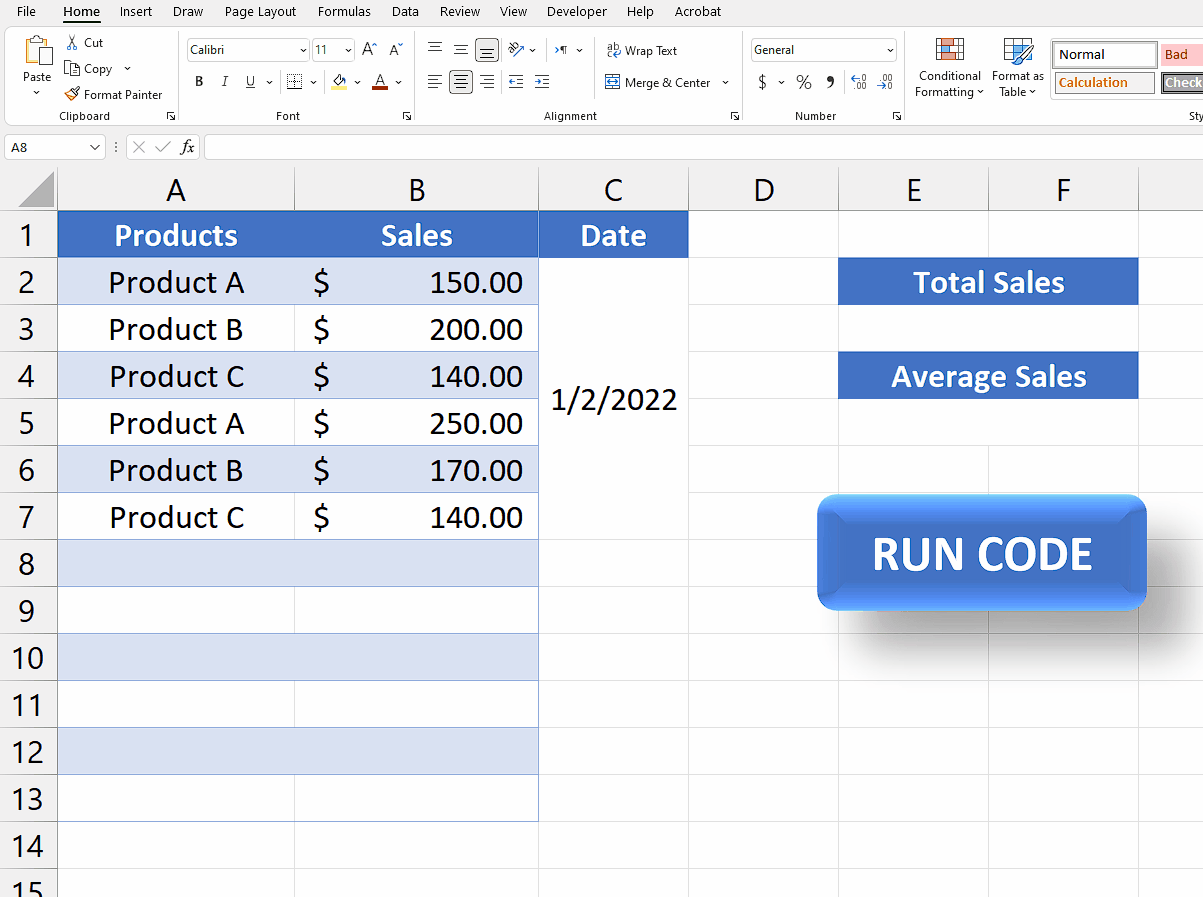
– Since the sales data accumulates in the columns daily, the recently added data for the next day has now modified the existing data.
– To evaluate the functionality of the dynamic array, you have to input or alter the data.
Step 7 – Run the code Again
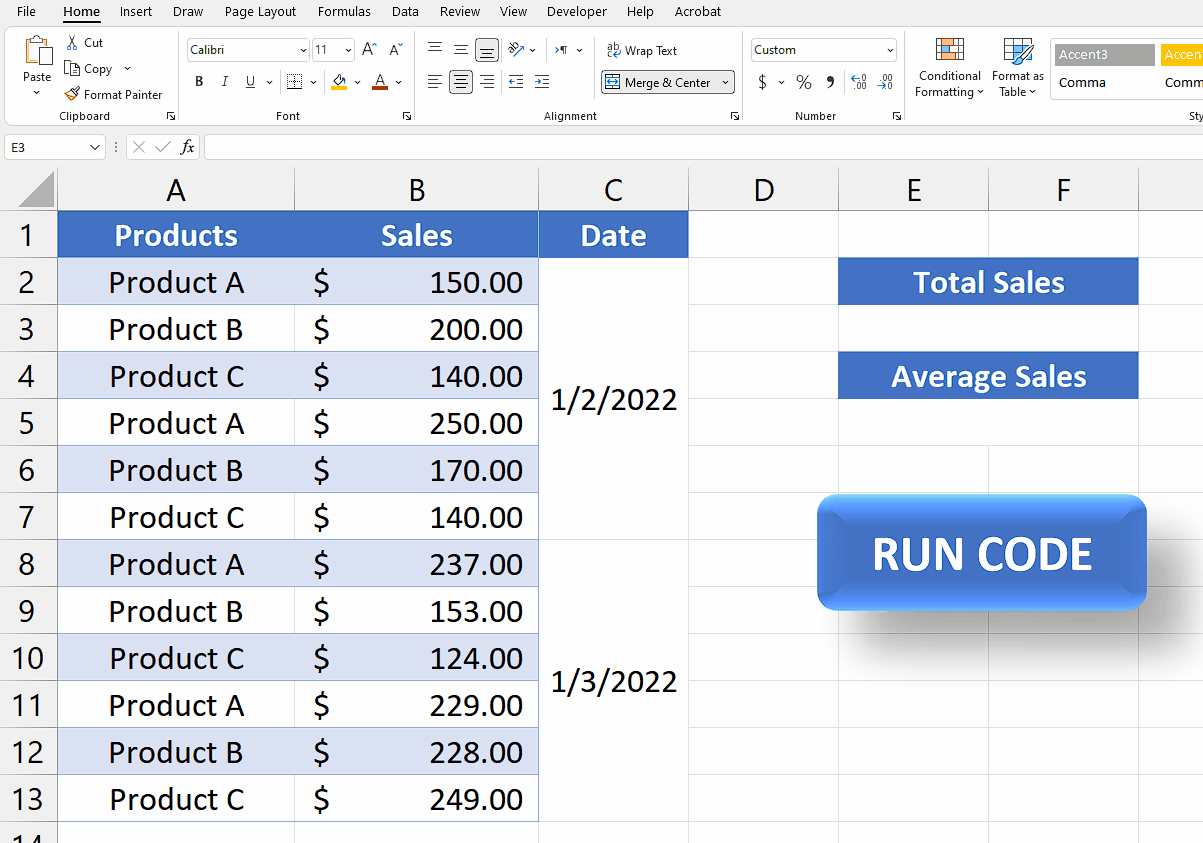
– Click on the button to execute the code.
– Even though the dataset has been modified and new cells have been added, the code continues to function correctly. This is due to the utilization of a dynamic array in our code, which operates seamlessly regardless of the number of cells in the “Sales” column.
– We can observe that the accurate values for “Total Sales” and “Average Sales” are calculated for the two days.



